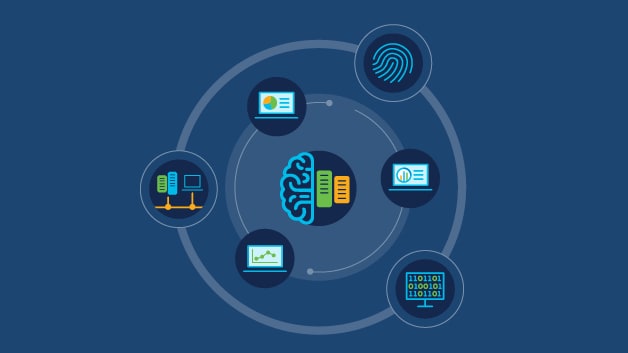
What is the Recurrent Neural Network (RNN), and how does it work? RNNs, or recurrent neural networks (RNNs), are neural systems that learn by mapping inputs and word pairs. A neural network that has many layers could have multiple layers each mapping to a particular word or phrase. The hidden state would represent the previous inputs in the third step. This is repeated until the last target word is discovered. The RNN will then output a word prediction from the inputs.
Recurrent neural networks
Recurrent neural network is a popular machine-learning technique. They employ a number of hidden layers to transmit information through all layers. A recurrent neural network's output is determined by comparing its current state with the target output. An error is created when the two are not equal. Machine translation also uses recurrent neural nets. They use a sequence if input and output data to determine how likely each word is in an output sentence.

LSTM
LSTM stands short-term long-term memory. This type of artificial neural network is used in deep learning and artificial intelligence. Its feedback connections allow it to process single data points as well as entire sequences of data. It can learn new situations by retrieving and reprocessing previous learned information. LSTM models are well-respected for their ability to perform machine learning and artificial intelligent.
Convolutional neural network
Convolutional neural nets use multiple layers to process images. Layer depth determines how many neurons are in each layer. The convolutional network takes a raw image as its input and learns to detect various features of the image through spatially local correlation. A variety of oriented edges and blobs could activate different neurons, which could lead to a range of other neuronal activations.
One-to-one
There are two main types, One-to-1 RNN or Many-to-1 RNN. One-to-One neural networks are extremely basic and only produce one output per input. In contrast, the One-to-Many RNN model takes multiple inputs and predicts one output. It is used in sentiment classification and music generation. Both have their benefits and drawbacks.

Many-to-one
One-to-1 RNN architecture represents the most basic type of neural network. It produces one output for each input. Contrary to this, the multi-to-one RNN architecture produces multiple outputs from one input. It is frequently used in music generation and sentiment classification. One-to-one RNN only requires one input and one output in order to classify a document either as positive or negatively.
FAQ
AI: Is it good or evil?
AI can be viewed both positively and negatively. On the positive side, it allows us to do things faster than ever before. No longer do we need to spend hours programming programs to perform tasks such word processing and spreadsheets. Instead, our computers can do these tasks for us.
People fear that AI may replace humans. Many believe that robots may eventually surpass their creators' intelligence. This may lead to them taking over certain jobs.
What does the future hold for AI?
Artificial intelligence (AI), the future of artificial Intelligence (AI), is not about building smarter machines than we are, but rather creating systems that learn from our experiences and improve over time.
In other words, we need to build machines that learn how to learn.
This would enable us to create algorithms that teach each other through example.
Also, we should consider designing our own learning algorithms.
You must ensure they can adapt to any situation.
Which countries lead the AI market and why?
China is the leader in global Artificial Intelligence with more than $2Billion in revenue in 2018. China's AI industry is led Baidu, Alibaba Group Holding Ltd. Tencent Holdings Ltd. Huawei Technologies Co. Ltd., Xiaomi Technology Inc.
The Chinese government has invested heavily in AI development. The Chinese government has established several research centres to enhance AI capabilities. These centers include the National Laboratory of Pattern Recognition and State Key Lab of Virtual Reality Technology and Systems.
China is also home of some of China's largest companies, such as Baidu (Alibaba, Tencent), and Xiaomi. These companies are all actively developing their own AI solutions.
India is another country that has made significant progress in developing AI and related technology. India's government is currently focusing its efforts on developing a robust AI ecosystem.
Why is AI used?
Artificial intelligence refers to computer science which deals with the simulation intelligent behavior for practical purposes such as robotics, natural-language processing, game play, and so forth.
AI can also be referred to by the term machine learning. This is the study of how machines learn and operate without being explicitly programmed.
AI is often used for the following reasons:
-
To make life easier.
-
To accomplish things more effectively than we could ever do them ourselves.
Self-driving vehicles are a great example. AI can take the place of a driver.
What does AI mean for the workplace?
It will change our work habits. It will allow us to automate repetitive tasks and allow employees to concentrate on higher-value activities.
It will enhance customer service and allow businesses to offer better products or services.
It will allow us to predict future trends and opportunities.
It will enable organizations to have a competitive advantage over other companies.
Companies that fail to adopt AI will fall behind.
How will governments regulate AI
AI regulation is something that governments already do, but they need to be better. They need to ensure that people have control over what data is used. Companies shouldn't use AI to obstruct their rights.
They must also ensure that there is no unfair competition between types of businesses. For example, if you're a small business owner who wants to use AI to help run your business, then you should be allowed to do that without facing restrictions from other big businesses.
Statistics
- By using BrainBox AI, commercial buildings can reduce total energy costs by 25% and improves occupant comfort by 60%. (analyticsinsight.net)
- According to the company's website, more than 800 financial firms use AlphaSense, including some Fortune 500 corporations. (builtin.com)
- The company's AI team trained an image recognition model to 85 percent accuracy using billions of public Instagram photos tagged with hashtags. (builtin.com)
- While all of it is still what seems like a far way off, the future of this technology presents a Catch-22, able to solve the world's problems and likely to power all the A.I. systems on earth, but also incredibly dangerous in the wrong hands. (forbes.com)
- A 2021 Pew Research survey revealed that 37 percent of respondents who are more concerned than excited about AI had concerns including job loss, privacy, and AI's potential to “surpass human skills.” (builtin.com)
External Links
How To
How to setup Google Home
Google Home is a digital assistant powered by artificial intelligence. It uses advanced algorithms and natural language processing for answers to your questions. Google Assistant can do all of this: set reminders, search the web and create timers.
Google Home integrates seamlessly with Android phones and iPhones, allowing you to interact with your Google Account through your mobile device. Connecting an iPhone or iPad to Google Home over WiFi will allow you to take advantage features such as Apple Pay, Siri Shortcuts, third-party applications, and other Google Home features.
Like every Google product, Google Home comes with many useful features. For example, it will learn your routines and remember what you tell it to do. So, when you wake-up, you don’t have to repeat how to adjust your temperature or turn on your lights. Instead, just say "Hey Google", to tell it what task you'd like.
These steps are required to set-up Google Home.
-
Turn on Google Home.
-
Hold the Action button at the top of your Google Home.
-
The Setup Wizard appears.
-
Select Continue
-
Enter your email address and password.
-
Choose Sign In
-
Google Home is now available